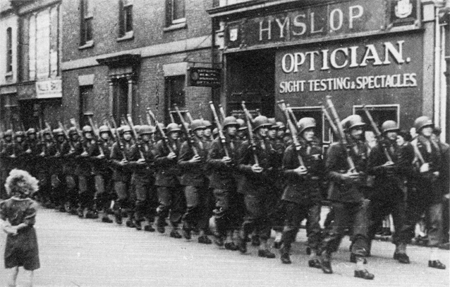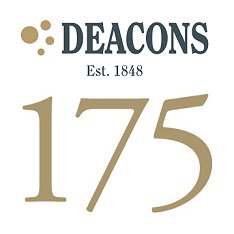Swindon on D-Day
Swindon wakes up to the sound of history in the making
People knew it was coming and might have guessed it would come soon, but most civilian Swindonians were in their beds when it finally happened.
When June 6, 1944 came, few people in Swindon called it D-Day.
Although the term would soon pass into the language, on the day itself, to ordinary people and even most soldiers, the biggest invasion the world has ever seen was known as ‘the big show’.
“The roar of the planes brought people from their beds”, reported the Advertiser, the day after a night of “intense air activity”, and under a banner headline “Slashing into France”, added: “Allied air activity meant an almost sleepless night for many in the south.”
But evidence that the liberation of Western Europe was finally underway could also be found on the ground, where Swindon had key roles to play.
As a transport centre of national importance because of its massive Railway Works, Swindon workers had already produced important items for the war effort, such as landing craft, which were being pressed into action on the Normandy beaches on June 6.
But it was also a transport hub, part of a vast network of railways ferrying troops, equipment and supplies to southern ports, thanks to its strategic location on the main GWR line between Paddington and Bristol, and its northern connection with Cheltenham, Gloucester and beyond.
 On the march:
On the march:
American soldiers in Wood St in 1944 |
Ironically, at least as important a role was played by what many traditionally call “Swindon’s other railway,” the Midland and South Western Junction Railway, because its network extended south, through to the south coast.
A loop connected it with the GWR, but it also had its own station in Old Town, off Newport Street, called Swindon Town.
Once the invasion had begun, however, Swindon's role changed dramatically, from supply to receipt, the grim reality being that Swindon was at the centre of one of the areas earmarked to receive and distribute casualties returning from the front in the days, weeks and months after D-Day.
Some of the casualties would return thanks to Swindon-built trains, the GWR having completed its first order from the United States Army for ambulance trains in March 1943.
Patricia Griffiths, who was a teenager at the time, recounted the scene at Swindon Town station on D-Day itself on the BBC’s People’s War website. She recalled:
I went to the Old Town station, on my way to the shops, and all the road was lined with ambulances, and very few trains came into the station at all. And I thought, "What’s going on?"
I went and did the shopping, and I came back, and again there were ambulances, and stretchers, and trains coming in all the time… And I asked somebody: "What is it?" and they said: "They’re bringing them all back from France - the casualties."

Transport hub:
Swindon Town station in Old Town |
However, they were not being transported to the RAF hospital at Wroughton, as Patricia and some locals assumed. That hospital, later called the Princess Alexandra Hospital, received its first casualties after D-Day on June 13, a week after the invasion began.
They arrived via RAF Lyneham, and were ferried to Wroughton by a fleet of ambulances. In the following six months, more than 4,800 would be transported to the hospital.
Back in Swindon on D-Day, the news of the invasion was greeted with relief and, as the Mayor of Swindon, Alderman FA Drinkwater, explained, hope.
June 6, 1944 happened to be the date of the monthly meeting of Swindon Council, and Alderman Drinkwater told councillors: “Before proceeding with the business before the Council, I feel it would be appropriate for me to refer to this outstanding day in our national history, and to express the hope that good fortune and success will attend the Allied forces in this important, and, we hope, closing phase of the hostilities in Europe.”
Town Gardens concert
With the job still to be done and with local lives still to be lost, this was no time for celebration, but perhaps those who attended a spectacular band concert at the Town Gardens on D-Day plus one felt they had more reason to smile than before.
A crowd of more than a thousand welcomed the 86-strong members of the United States Army Band, and saved their biggest cheers for when the band played The Yanks Are Coming.
Read Patricia Griffiths’ war recollections in full at
http://www.bbc.co.uk/ww2peopleswar/stories/30/a9009830.shtml




























